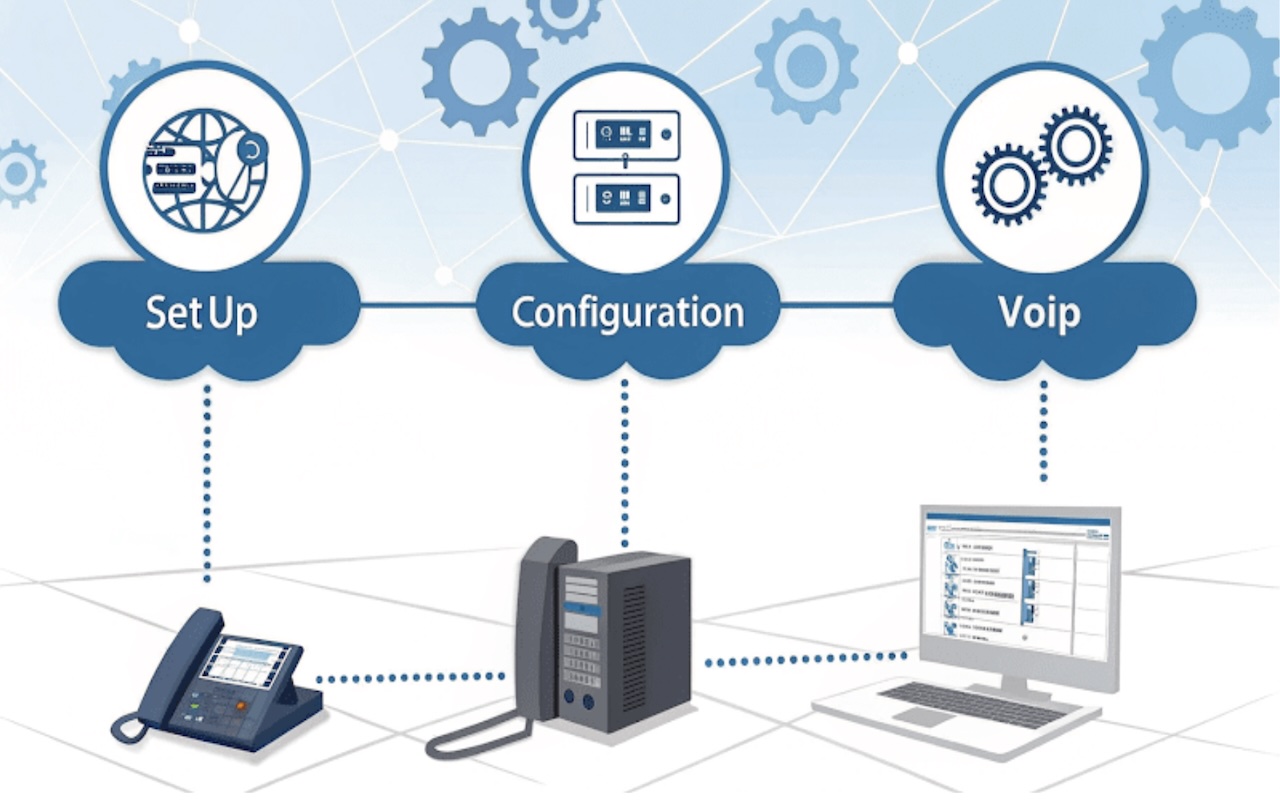
The evolution of business communication brought Private Branch Exchange (PBX) systems into a more flexible and cost-efficient direction through new solutions. The transformation of business communications relies mainly on the implementation of Virtual PBX with Voice over Internet Protocol (VoIP) technologies. Through its cloud-based and hosted PBX functionality, Virtual PBX services remove the requirement for physical hardware, enabling organizations to process telephone calls through the Internet. Virtual PBX operates from service provider facilities and receives its management; thus, businesses pay operational expenses rather than capital costs for the equipment.
How Virtual PBX Enhances VoIP Systems
Virtual PBX makes use of VoIP technology to deliver efficient business communication management. Virtual PBX operates from cloud storage, which removes the requirement of having PBX hardware at physical locations. The process of switching voice signals from analog to digital format makes data packet transmission through broadband networks possible. Internet-based calling reaches its peak potential through Virtual PBX, which implements features such as call routing, extension dialing and voicemail, and auto-attendant capabilities, resulting in a complete business communication system.
Almost all virtual PBX platforms use Session Initiation Protocol (SIP) for managing VoIP calls. SIP functions as a communications signaling system that ensures simple session start and end points through the network. The data transmission backbone is VoIP, yet the system control functions come from Virtual PBX, which oversees telecommunications activities and feature manipulation. The performance of operations heavily depends on maintaining stable internet connections, together with properly configured network infrastructure.
Key Benefits of Virtual PBX with VoIP
- Cash conservation occurs through the absence of on-site PBX equipment and lowered maintenance costs.
- The addition or deletion of business features, together with additional lines, becomes simple for all businesses through an infrastructure free of physical limitations.
- Business users enjoy the freedom to make and receive phone calls because the VoIP phone system allows them to use their internet-connected laptops and smartphones and VoIP-enabled devices.
- The advanced function set contains auto-attendant features together with voicemail transcription to email and the ability to reroute calls, along with recording capabilities and CRM integration functions.
- When PBX systems operate through cloud hosting, the business can continue making and receiving calls without interruptions during all local service disruptions.
- A superior customer experience develops from intelligent call routing systems linked with automated attendants that provide rapid service handling to customers.
Steps to Set Up a Virtual PBX with VoIP
- The first step is to pick a VoIP provider who delivers Virtual PBX services and matches your business needs in terms of service plans.
- Go to the provider's website portal to register an account by entering the company details and payment information.
- Business users can obtain new virtual numbers or bring their existing business numbers when they configure virtual numbers.
- Users should get extensions through the platform by adding them to the system while distributing numbers based on departments.
- Businesses can determine their routing rules for calls because they can direct telephone traffic either to extensions or departmental contacts, or to voicemail according to established standards.
- You can customize both voicemail boxes and automated responses in this procedure.
- You need to establish connections between your existing VoIP devices through the configuration of IP phones and the installation of softphone applications on various technological devices.
- Test the system through complete telephone calls from making to receiving to validate system functionality.
Best Practices for Virtual PBX Management
A business should use these best practices to ensure continuous optimization of performance, together with security, while maintaining user experience:
- User Management - Regularly update user roles and access privileges. Businesses should establish powerful password rules combined with an automatic system to disable user accounts after a specific period without use.
- The platform needs time-based routing and call queuing logic set up for better call management performance.
- The PBX system should receive periodic software updates together with VoIP device updates for improved security alongside better performance capabilities.
- The network should receive adequate bandwidth, while QoS settings must establish priority rules for voice communications.
- Business monitoring and analytics tools provide tracking of system performance for better call handling optimization through call log analysis.
Conclusion
Companies achieve scalable, cost-effective solutions with powerful features when they implement a virtual PBX connected to a VoIP system. Hosted PBX solutions based on the cloud and VoIP technology strengthen flexibility and mobility features and drive improved operational performance. The management solution, such as JustCall, implements simple platform operations to help companies optimize their communication infrastructure, which leads to enduring success.
Share this post
Leave a comment
All comments are moderated. Spammy and bot submitted comments are deleted. Please submit the comments that are helpful to others, and we'll approve your comments. A comment that includes outbound link will only be approved if the content is relevant to the topic, and has some value to our readers.

Comments (0)
No comment